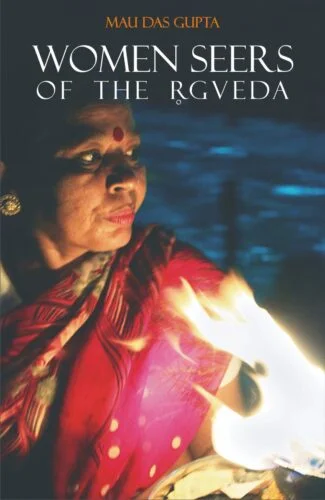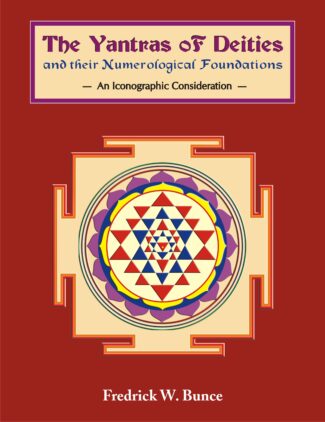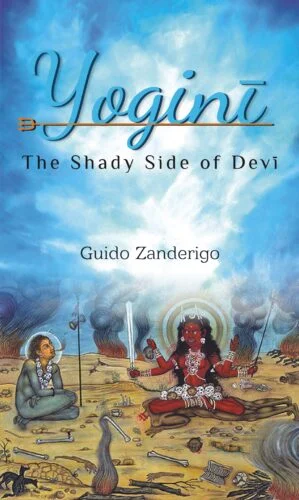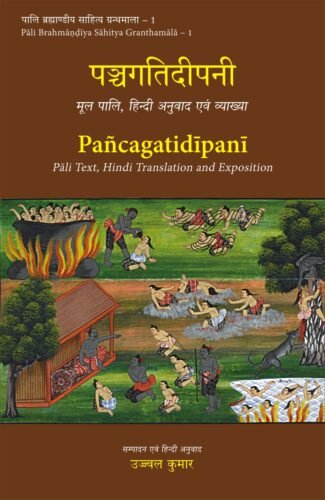Showing 241–250 of 250 results

How can we understand the Hindu tradition as alive today? That is the question which this book investigates. It asks for a broader understanding of history, rightful accounting of the Vedas and of other oral learnings. The goal of truth is sought by approaching different personalities and institutions of culture.
In India, there has long been a tendency to emphasize the spoken word which is passed on alive from an individual teacher to each individual student. But, through the development of modern media, more use is now made of the written word which records information externally, in institutions that have been industrially, socially and culturally organized. How then can we understand the Hindu tradition as alive today with its ancient emphasis upon the spoken word and the living individual? That is the question which this book investigates. Accordingly, it asks for a broader understanding of history, which would allow for a rightful accounting of the Vedas and of other oral learning. Through its continued emphasis upon the living word, the Hindu tradition asks for a deeper understanding of reasoned enquiry. Such reasons do not work primarily through mechanical instruments in the restricted way that modern physics does. Instead, it works essentially through a reflective investigation of our living faculties, which are thus cultivated and clarified. The goal of truth is not here sought through an institutional consensus; but rather as a common ground, which is approached quite differently through different personalities and institutions of culture.

How can we understand the Hindu tradition as alive today? That is the question which this book investigates. It asks for a broader understanding of history, rightful accounting of the Vedas and of other oral learnings. The goal of truth is sought by approaching different personalities and institutions of culture.
In India, there has long been a tendency to emphasize the spoken word which is passed on alive from an individual teacher to each individual student. But, through the development of modern media, more use is now made of the written word which records information externally, in institutions that have been industrially, socially and culturally organized. How then can we understand the Hindu tradition as alive today with its ancient emphasis upon the spoken word and the living individual? That is the question which this book investigates. Accordingly, it asks for a broader understanding of history, which would allow for a rightful accounting of the Vedas and of other oral learning. Through its continued emphasis upon the living word, the Hindu tradition asks for a deeper understanding of reasoned enquiry. Such reasons do not work primarily through mechanical instruments in the restricted way that modern physics does. Instead, it works essentially through a reflective investigation of our living faculties, which are thus cultivated and clarified. The goal of truth is not here sought through an institutional consensus; but rather as a common ground, which is approached quite differently through different personalities and institutions of culture.

A selection of papers presented at a global congress on World’s Religions after September 11, stressing the need for various religions to develop a better understanding of each other. The papers deal with Islamic, Christian, Bahai, Sikh, Primal and Hindu religious traditions and beliefs.
The volume is concerned with the role of religion in the present day. Presenting proceedings of a global Congress on Worlds Religions after September 11 held in September 2006 at Montreal, Canada, it stresses the need for interfaith friendships to develop understanding between faiths and remove stereotypes that have emerged concerning religious beliefs and their followers. Examining the thoughts of Western theologians and others on the role of religion, it discusses spirituality as being at the root of tolerance. The papers refer to Islamic, Christian Mennonite, Bahzi, Sikh and Hindu religious traditions and beliefs but bear specific reference to the North American Roman Catholic Retreat Centre at Pembroke, Ontario, Canada. They engage in examining specific topics pertaining to the different religious faiths and traditions. They examine the life of Guru Arjan Dev and his message and its significance today, the work of Mira Behn towards conserving the environment of the Himalayas, and the indigenous Australian Christian womens perception. The book provides a glimpse into the life, work and experiences of the spiritual women of Ramanashrama at Tiruvannamalai in Tamil Nadu and Ramanas views on womans right to spirituality, asceticism and salvation. It showcases the contribution of the Inter-religious Council of Central New York towards bringing people of different faiths and cultures into situations of mutual respect and trust. The volume includes the text of the Universal Declaration of Human Rights.

Providing detailed accounts of the women seers of Rigveda, this volume discusses the traditional expositions vis-à-vis the modern interpretations of those accounts. It minutely explains the sociocultural aspects of the select texts, thus exposing the world-view of those women seers.
This volume brings forth an in-depth study of Rigveda from the sociocultural perspective, analysing the various aspects of hymns ascribed to the women seers of the root Veda. Though modern scholars from the East and the West have made many an attempt in interpreting the hymns of the Rigvedic poetesses, those lacked a thorough study from the sociocultural perspective.
While providing detailed accounts of the women seers of Rigveda, this volume discusses the traditional expositions vis-à-vis the modern interpretations of those accounts. It minutely explains the sociocultural aspects of the select texts, thus exposing the world-view of those women seers. Their personal traits and compositions on the basis of the mythological data available in the Vedic and subsequent literatures enrich the volume further.
Apart from the liturgical peculiarities and literary analysis of the hymns of the women seers, and the language and stylistics of the texts from a linguistic point of view, the book deals with a study of the sentence patterns which, normally lacks in Sanskrit research works.

The book, highlights the essential import of the innocuous-looking, yet enigmatic, diagrams called Yantras surfacing from the occult practices of the tantrics. It examines a range of tantric yantras, with their varieties, applications, modes of construction and above all their iconographic features.
Hinduism is known for the bewildering profusion of its deities, who are represented not only in two or three dimensional anthropomorphic images, but also in abstract configurations, known as yantras. In yantras is, thus, seen almost a parallel with the surfeit of deities in Hindu tradition. Literally meaning an instrument, apparatus or a talisman, yantra is a kind of mystical diagram used, in tantra, for both meditation and invoking a divinity, and is believed to possess/arouse occult powers. Drawn only by the adept: the ones schooled in this arcane, highly intricate process, and energized by siddh mantras, these seemingly innocuous geometrical figures are employed for any number of reasons or desires: whether to attain wealth, ward off disease, beget a son, vanquish enemies, or even to cause somebodys death. This book, the latest from Professor Bunce, highlights the essential import of these innocuous-looking, yet enigmatic, diagrams surfacing from the occult Practices of the tantrics. The author, an internationally known scholar of Oriental Art, examines a range of tantric yantras, with their varieties, applications, modes of construction and, above all, their iconographic features. Also inter- woven in his text are lucid descriptions of all else associated with a yantra, notably, its deity, its specific purpose, its predominant and secondary numbers and its mantra. Carrying beautiful visual representations of over a hundred yantras, Professor Bunces study holds out enduring appeal to the readers concerned not only with the iconography of tantric yantras, but their mystifying under-pinnings as well.

This book is a comparative study of the phenomenology of Yogacara Vasubandhu and that of the German philosopher Edmund Husserl having the focus on the understanding of the deeply inner nature of consciousness or mind. It asserts that the Yogacara philosophy is much richer and comprehensive than the Western phenomenology, particularly the Husserlian phenomenology.
This book is a comparative study of the phenomenology of Yogacara Vasubandhu and that of the German philosopher Edmund Husserl having the focus on the understanding of the deeply inner nature of consciousness or mind. It articulates that the Yogacara philosophy is much richer and comprehensive than the Western phenomenology, particularly the Husserlian phenomenology.
Later Vasubandhu’s philosophical orientation was idealist in Indian sense or a phenomenologist in Husserlian sense. His Mahayana Yogacara idealism is based on Asanga’s seminal text Sandhinirmocanasutra and his own Vijnaptimatratasiddhi (Vimsatika and Trimsika together) along with his exploration of the intrinsic theory of consciousness or mind. For one to have a clear-cut understanding of Vasubandhu, the book follows the Husserlian phenomenological approach as a philosophical methodology and also used select terminology wherever required.
This book is expected to be highly useful for students, researchers and teachers in the area of Indian/Buddhist philosophy.
This book is a comparative study of the phenomenology of Yogacara Vasubandhu and that of the German philosopher Edmund Husserl having the focus on the understanding of the deeply inner nature of consciousness or mind. It asserts that the Yogacara philosophy is much richer and comprehensive than the Western phenomenology, particularly the Husserlian phenomenology.

This book is a journey in search of these mysterious figures who nestle in the shadow of the Goddess. A journey which unfolds in the frontier zones of Indian tradition, constantly hanging in the balance between Tantric rituals, sacrifices and subtle knowledge.
The Yoginis are awful expressions of the divine in feminine form of which evidence is found in Tantric contexts in both the Hindu and Vajrayana Buddhist traditions. Endowed with a multitude of aspects and functions, they may take the form of women or witches devoted to obscure rituals, of primordial forces linked with illness, poisoning and possession, of subtle beings present in supporting one for meditation like yantra and mantra, or of genuine gods who frighten and fascinate. Gathering in circles in the depths of the forest or in cremation grounds, the Yoginis engender powers and secret knowledge, granted to those who evoke them through practices which may be extreme. Ultimately the Yoginis keep company with death, offering to the initiates who surrender to their embrace the prospect of liberation beyond the glittering world of illusion.
This book is a journey in search of these mysterious figures who nestle in the shadow of the Goddess. A journey which unfolds in the frontier zones of Indian tradition, constantly hanging in the balance between Tantric rituals, sacrifices and subtle knowledge a perilous quest which is the heritage of all traditional searches.
This volume written in elegant, fluent and colourful prose should entice the interest of all those associated with the Tantric practices, especially that of Saptamatrikas, ten Mahavidyas, Dakini and Nitya.

This book vividly describes how one can achieve samadhi through transforming sex. It unveils the mystery of gods and goddesses and the worshipping of Shiva-lingam. It delves on topics such as why is sex sacred, kundalini and how to raise it, and the connection between sex and spirituality. It enlightens one how to keep the flame of love ever lit in a marriage and achieve the union of heart, mind and soul. It discovers the fountain of youth, a secret guarded for centuries.
Zen Kamasutra is loaded with esoteric wisdom on how to achieve samadhi through transforming sex. It uncovers the mystery of gods and goddesses, why Hindus worship the Shiva Lingam and why is sex sacred? What is Kundalini? How and why to raise the Kundalini? It explains the much-guarded secret of the gods the connection between sex and spirituality. It enlightens one on how to keep the flame of love ever lit in a marriage and achieve a union of heart, mind and soul. It clears up questions that a spiritual seeker has on mysteries of life and death. Also discover here the fountain of youth, another secret, guarded for centuries.
The book would appeal to all those who want to grow spiritually whilst perceiving their journey to be rational and logical. Apply the recommended practices to experience the magic yourself. This book also throws light on chakras by revealing that different chakras govern different qualities like leadership, wisdom, love, communication skills, creativity and intelligence, which can be developed.
दार्शनिक समीक्षा का सत्याग्रह नामधेय यह कृति मेरे द्वारा दिए गए व्याख्यानों का एक परिमार्जित संग्रह है। यह सभी व्याख्यान भारत के प्रतिष्ठित शिक्षा संस्थानों में 2017-18 के दौरान भारतीय दार्शनिक अनुसन्धान परिषद् के अतिथि आचार्य (विजटिंग प्रोफेसर) के रूप में दिए गए थे। ऐसे संग्रह-ग्रन्थ में विचार केन्द्रित अन्विति नहीं होती, और यदि होती भी है तो उसे विचारक-केन्द्रित अन्विति के रूप में ही परखा जा सकता है। विचारों में विचारक-केन्द्रित अन्विति अनुप्रास युक्त पदों से निर्मित एक वाक्य की तरह होती है जिसके अलग-अलग पद आनुप्रासिक सौन्दर्य के साथ अर्थ का अभिधान करते हैं। इसी प्रकार का आनुप्रासिक सौन्दर्य एक व्यक्ति के बहुविध वैचारिक उपक्रमों की सार्थकता होती है। दार्शनिक समीक्षा के रूप में समाकलित इन सभी व्याख्यानों की अन्विति उनके सत्याग्रही होने में है। विचार का सत्य विचारों के मूलगामी अर्थ को उद्घाटित करना है। समीक्षा जब इस उद्देश्य के साथ प्रवर्तित होती है तभी “सत्याग्रह” उसका विशेषण बनता है।

इस ग्रन्थ का मुख्य विषय नरक, पशु, प्रेत, मनुष्य, और देव नामक पाँच गतियों में कर्म के आधार पर होने वाले प्राणियों के जन्म का कारण तथा वहाँ होने वाले सुख और दुःख को सरल भाषा, पारलौकिक विषय-वस्तु, एवं कुछ अतिरजनाओं के साथ बतलाना है।
पञ्चगतिदीपनी पालि ब्रह्माण्डीय साहित्य (Pāli Cosmological Literature) का एक महत्त्वपूर्ण ग्रन्थ है। मुख्यतः पञ्चगतिदीपनी बौद्ध-संस्कृत ग्रन्थ षड्गतिकारिका का पालि भाषान्तर है। परम्परा के अनुसार बौद्ध महाकवि अश्वघोष को षड्गतिकारिका का रचनाकार माना जाता है। भारत में इस ग्रन्थ का सम्बन्ध वात्सीयपुत्रीय-सम्मितीय सम्प्रदाय से था। कालान्तर में नौवीं से बारहवीं शताब्दी के बीच षड्गतिकारिका का चीनी, तिब्बती, एवं पालि में भाषान्तर किया गया। षड्गतिकारिका का भाषान्तर पालि में सबसे पहले छगतिदीपनी के नाम से बारहवीं शताब्दी के आसपास म्यांमार (बर्मा) में किया गया। पुनः इस ग्रन्थ को थेरवाद परम्परा-सम्मत बनाने के लिए छगतिदीपनी से पञ्चगतिदीपनी के रूप में पुनरुद्धार किया गया। सम्प्रति पाँच कण्ड में विभाजित पञ्चगतिदीपनी में 114 गाथाएं हैं। इस ग्रन्थ का मुख्य विषय नरक, पशु, प्रेत, मनुष्य, और देव नामक पाँच गतियों में कर्म के आधार पर होने वाले प्राणियों के जन्म का कारण तथा वहाँ होने वाले सुख और दुःख को सरल भाषा, पारलौकिक विषय-वस्तु, एवं कुछ अतिरजनाओं के साथ बतलाना है। प्रस्तुत आलोचनात्मक संस्करण पञ्चगतिदीपनी का देवनागरी पाठ, हिन्दी अनुवाद, टिप्पणी, मूल स्रोत, एवं भूमिका के रूप में पालि ब्रह्माण्डीय साहित्य पर एक विशद विवरण प्रस्तुत करता है।
| There are no products |